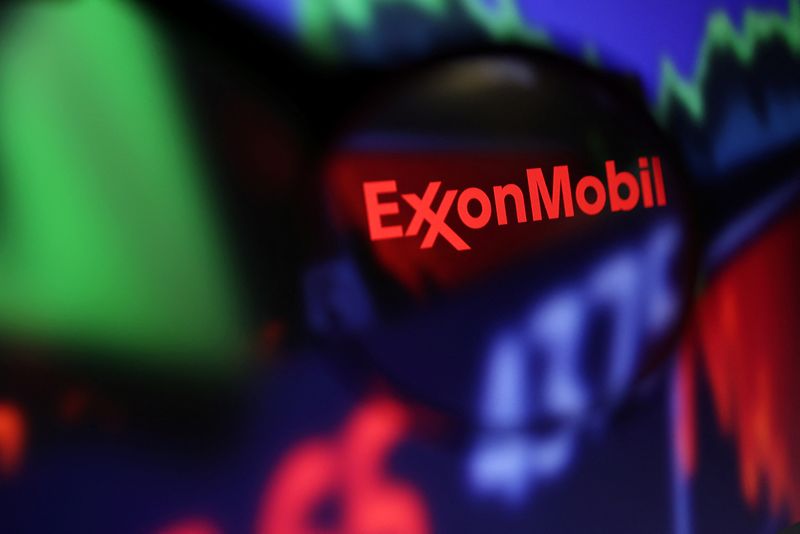By Sabrina Valle
(Reuters) -Exxon Mobil Corp on Thursday said it will lift spending next year to $23 billion-$25 billion, the top end of its guidance, and expand investments to curb carbon emissions.
Exxon (NYSE:XOM) led record profits among oil majors in the second and third quarters this year, aided by its highly criticized decision during the COVID-19 pandemic to double down on fossil fuels as European competitors shifted to renewables.
The strategy boosted its shares by more than 60% this year - far ahead of rivals Shell (LON:RDSa) PLC and BP (LON:BP) PLC - as oil prices rose to their highest levels since 2008 after Russia's invasion of Ukraine.
"The results we’ve seen to date demonstrate that we’re on the right course,” Chief Executive Darren Woods said in a corporate filing.
The plan, which brought no surprises, is a continuation of Exxon's current strategy to "produce the energy and products society needs" while reducing greenhouse gas emissions from its own operations and also from other companies, Woods said.
Exxon's spending budget extends a plan set a year ago to spend $21 billion-$24 billion in 2022.
The largest U.S. oil producer also said it will raise to $17 billion its spending in lower carbon projects through 2027, up from $15 billion.
The company has been steadily boosting investments in lower carbon projects since a quarter of its directors lost their seats in 2020 to outsiders who rejected Exxon's slow energy transition plans.
Most of its growing budget is targeted at curbing emissions from existing oil and gas operations and burying carbon underground, rather than on developing renewable fuels.
Exxon has one of the most ambitious plans in the industry to increase crude production over the next five years. Shell and BP, meanwhile, are slowly cutting oil output and migrating to solar and wind power and other renewable energy projects.
Exxon stuck to its target to raise oil and gas production to a record 4.2 million barrels of oil equivalent per day (boepd) by end-2027.
Most of the 500,000 boepd increase from current output is expected to come from countries such as Guyana, the United States and Brazil, as the company divests from more mature assets elsewhere.
But short-term production was reduced and will stay flat in this year and 2023 at 3.7 million boepd - assuming a $60 per barrel Brent price.
Output, which is down from the 3.8 million boepd it had targeted one year ago for 2022, was hit by its withdrawal from Russia, where it abandoned more than $4 billion in assets and a 220,000 boepd project.

Net production is expected to increase after 2024.
Exxon expanded its $30 billion share-repurchase program for 2022-2023, to up to $50 billion through 2024. By year-end 2022, Exxon expects to distribute about $30 billion to shareholders, including $15 billion in dividends and $15 billion in buybacks.